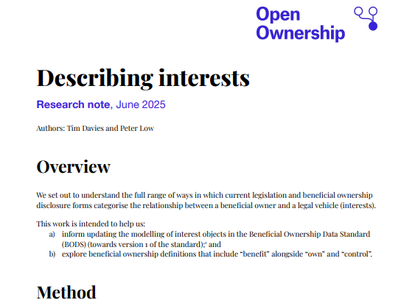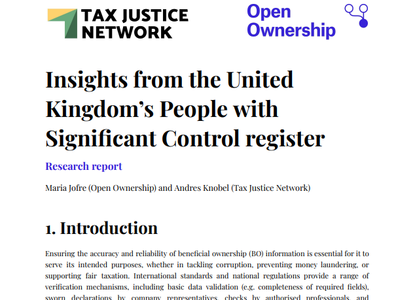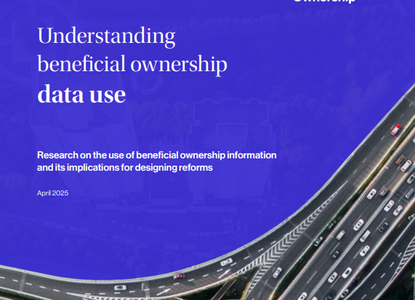Gender and beneficial ownership transparency
Help us understand how you are making use of resources from the Open Ownership website by filling out this short survey
Publication type
Research report
Publication
Sections
Research
Summary
Despite efforts to mainstream gender in policy and the current momentum of beneficial ownership transparency (BOT) reforms, the interaction between BOT, gender, and gender equality remains underexplored. This research report looks at the links between beneficial ownership transparency and gender. It considers a range of potential benefits, limitations, and risks of collecting and using sex-disaggregated beneficial ownership data for gender equality policies and initiatives.
Key findings
- Personal information collected about beneficial owners of companies through BOT does not include sex-disaggregated data in the majority of implementing countries. Nevertheless, sex data about a beneficial owner is available implicitly to most governments as part of beneficial ownership (BO) declarations or in existing datasets.
- The collection of sex data may help to unambiguously identify beneficial owners of companies in some contexts. Sex-disaggregaged BO data may also be able to help advance gender equality policies, and draw insights into women’s contributions to the economy, especially when considered in conjunction with other aspects of women’s enterprise.
- Processing sex-disaggregated BO data for gender equality purposes expands the initial scope of BOT reforms, which may require a re-assessment of whether the added value is proportional to the risks as well as putting in place new measures defining when and how to collect, use, and publish sex-disaggregated BO data.
- Where gender and sex are considered sensitive personal data, governments need to define a clear legal basis and purpose for the collection, processing, and publication of sex-disaggregated data on beneficial owners, and establish that the risks of doing so are proportionate. This is particularly relevant for publication, given concerns about risks of personal harm with respect to the publication of personal data as part of BOT.
- BOT policies can be gender responsive in their approach, even if they do not seek to promote gender equality as a primary aim. A gender-responsive approach implies that risks of potential harms associated with the collection and processing of gender information should be assessed and mitigated where possible, even if not required under data protection legislation.



